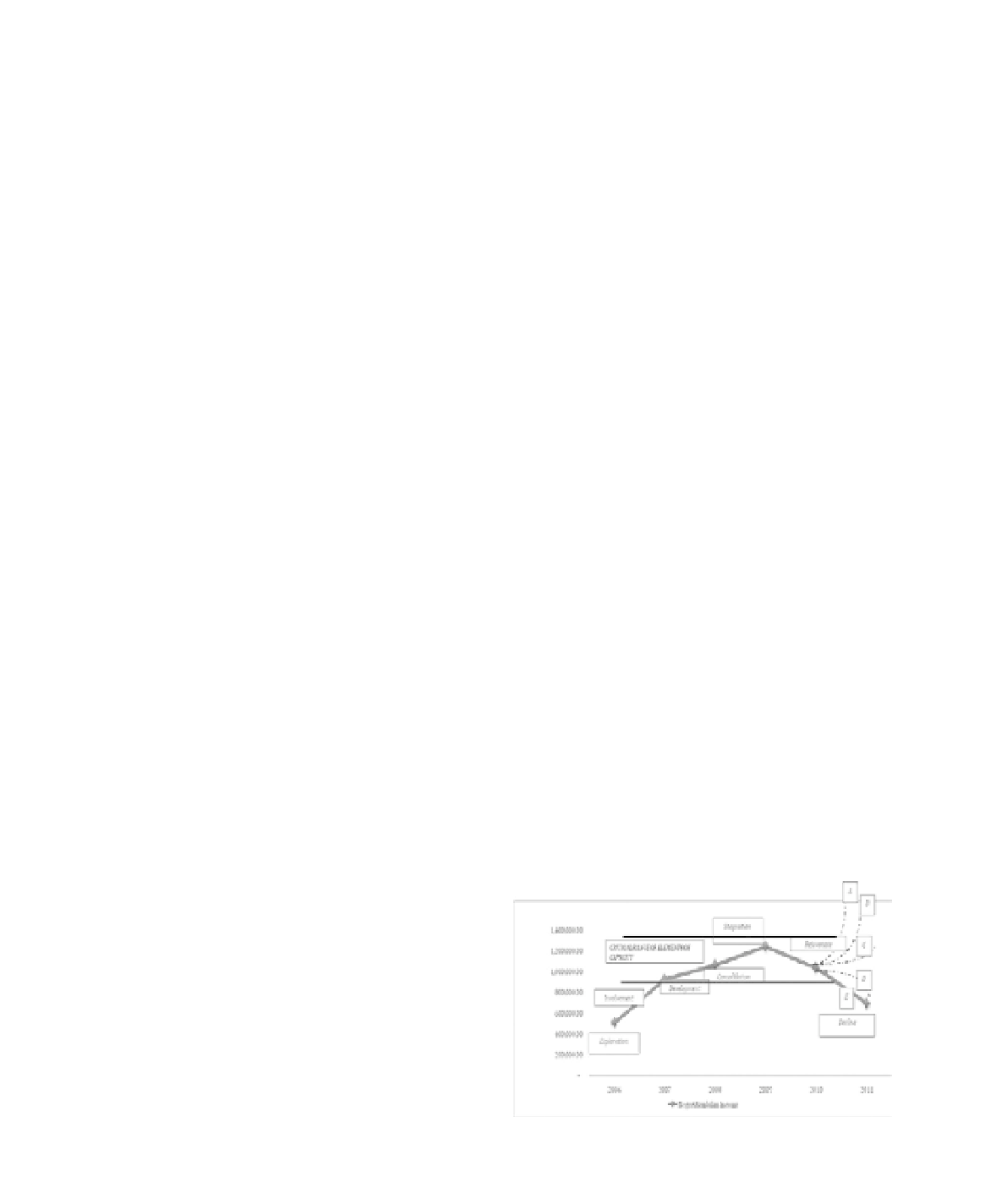Travel Reference
In-Depth Information
uniform transformation where increases in visita-
tion to a destination can be followed by a decrease
in visitation as carrying capacity to the destination
is reached. Nonetheless in the case of this CBT, it
should not be the case because it has not reached
the necessary carrying capacity limit to reach the
stagnation stage (personal comm. President of
Negeri Sembilan Homestay Association). There-
fore the main aim of this study is to identify the
causes of the declining growth of the homestay
programme. The research is based on a case study
basis where a survey of Negeri Sembilan homestay
providers was undertaken to gain a better under-
standing of the reasons for the declining situation.
The state was chosen because it showed the highest
decline, from RM1.24 million to RM0.69 million
in 2009 to 2011 respectively, despite the increase in
numbers of participating villages
demand. These evolutions are due to many factors,
including changes in priorities and meet the needs
of visitors, the gradual deterioration and possible
replacement of physical plant and facilities, and
changes or possible loss of natural and cultural
attractions of origin is responsible for the initial
popularity of the area. Evolution experienced by
a destination will have an impact on whether the
tourist experience will visit again or not. This is
likely because the evolution occurring will give
effect to the tourists to make their choice of desti-
nation (Ritchie & Crouch, 2003).
In TALC, there are seven phases of development
transformation of a destination. The cycle utilizes
number of tours (visitation) against time and goes
through a few steps of transformation from
explo-
ration
,
involvement
,
development
,
consolidation
to
stagnation
. From
stagnation
, the cycle has options,
either to
rejuvenate
or
decline
. These steps however
relate to the concept of carrying capacity, which
means increases in visitation to a destination can
be followed by a decrease in visitation as carry-
ing capacity to the destination is reached. Butler
(1980) proposed that the change in visitor arrivals
to a tourist destination follows the S-shaped curve
of the product life cycle. It refers to the dynamic
nature of the destination and it has proposed a
general process of development and the potential
decline can be prevented with appropriate inter-
vention interested parties at the destination (But-
ler, 2000).
Plotting the Negeri Sembilan homestay in
TALC, an S-shaped appears as in Figure 1. The
curve indicates that it has surpassed the point to
rejuvenate its destination but it is still not too late
to revive. Nonetheless, the argument here is that the
carrying capacity on the supply side has not been
reached yet. Resources in terms of houses are still
available. Therefore, the main aim of this research
is to identify what are the factors that could have
contributed to the declining situation.
2 LITERATURE REVIEWS
2.1
Homestay and community
Homestay is described as activities receiving tour-
ists to stay with the host during the holiday began
as early as in the 70's where there are villages along
the coast became a destination for tourists. The
tourist experience greatly enhanced when the host
provides food such as breakfast and lunch. He
pointed out that the concept of homestay is differ-
ent between countries, particularly in South-east
Asia. Although there is different interpretation, the
basic concept of homestay remains the same, “liv-
ing with host families”. The staying with the host
families resulted in an indirect exchange of culture
through eating together, participating in rural daily
activities such as fishing, rubber tapping and pick-
ing coconuts palm and attend gatherings, provide
a different experience for tourists (Kayat., 2009).
Homestay tourists are those who want to know the
ins and outs of the culture of human societies in
Malaysia (Peterson, 2004), it is a combination of
the relationship between local culture, the cultural
and natural environment in local areas (A Jamal,
Othman & Nik Muhammad, 2011). On the suppli-
er's side, CBT is focused on the concept of allow-
ing local communities to preserve their community
and identity, especially in the era of globalization
Youl (1997).
2.2
Tourist area life cycle by Butler (1980)
Butler (1980) has introduced Tourist Area Life
Cycle (TALC) in his study for the management of
tourism resources. According to Butler, a tourist
destination will experience the evolution either of
the physical environment or on its ability to meet
Figure 1.
Negeri Sembilan Homestay in Butler's TALC
Graph.




Search WWH ::

Custom Search